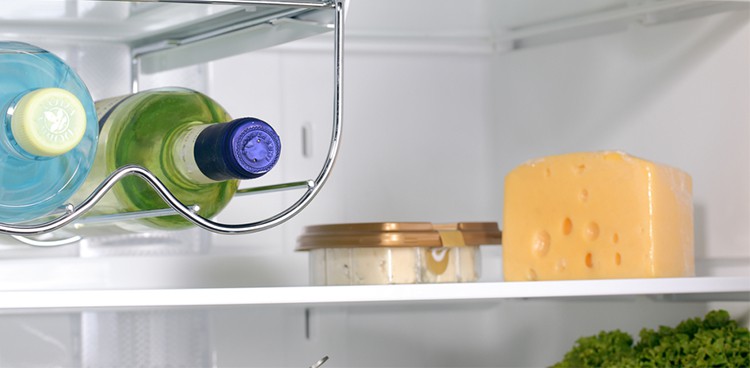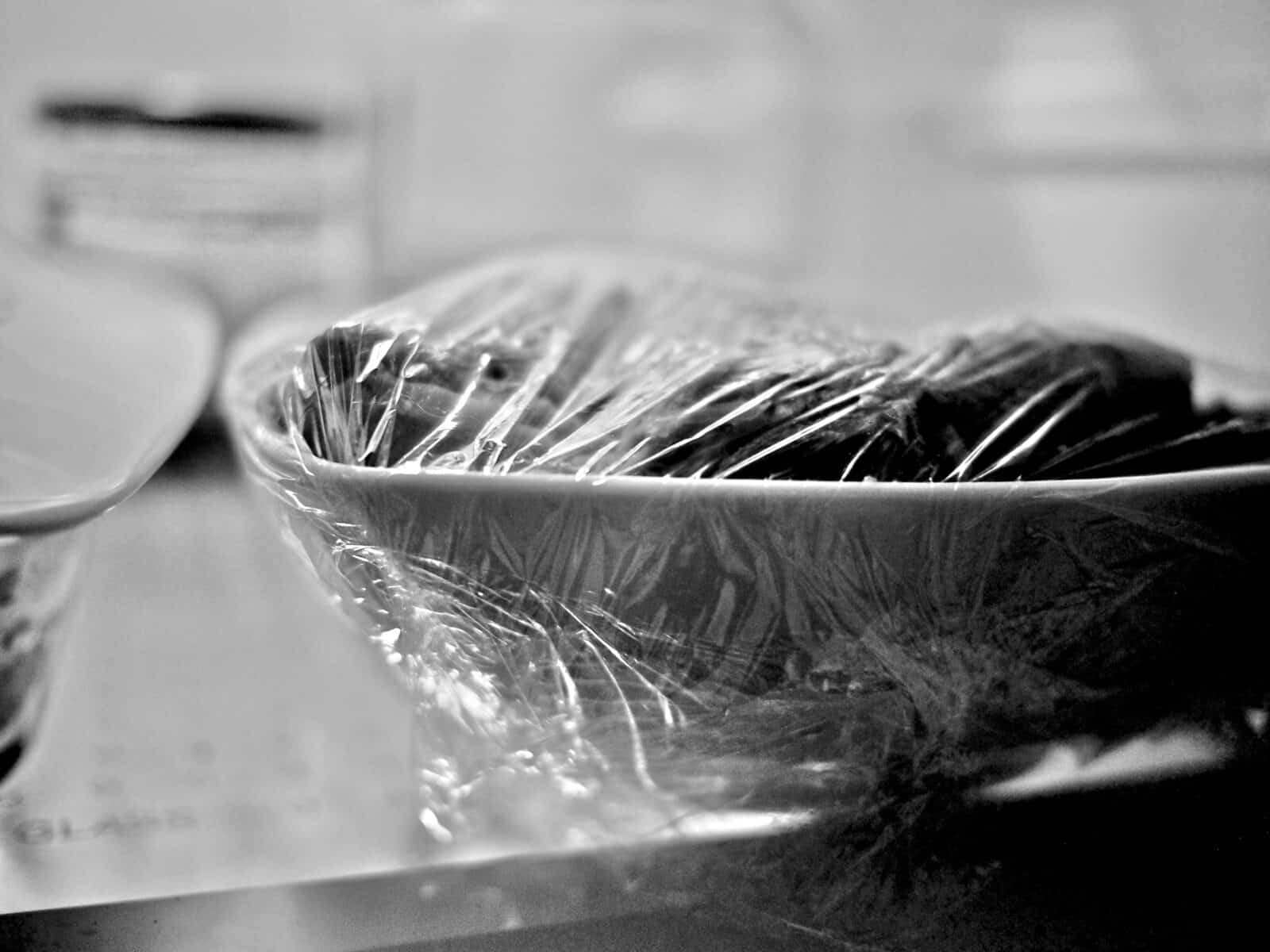
Everyone falls prey to common wisdom about how to best store and eat their cheese. You might be terrified of mold, or the cheese being too warm, or the cheese drying out. The thing is, most of these things we worry about cause us to mistreat our cheese so that it doesn’t live up to its full potential. Check out some of these common cheese mistakes to learn how to avoid them in the future!
1. Wrapping Cheese in Plastic Wrap

Photographed by Adam Machnicki.
We wrap everything in plastic wrap, afraid that if we don’t, germs will creep into the food and ruin it. For cheese, though, plastic wrap can spell ruin. Think of it this way: cheese continues to change after you buy it, aging and developing new tastes. By wrapping it up tightly, you are actually suffocating the cheese. This can mean trapping in any odors it gives off (like ammonia). Although some cheeses are grown with bacteria, wrapping it too tightly in plastic actually makes your cheese more likely to grow bad bacteria that will make the cheese taste funky or unsafe. Aside from these two issues, the oils and fat in cheese will pick up the plastic wrap chemicals, which is why it can taste like plastic the next time you try it.
All right. So what do you do instead? First things first—take any plastic wrap off of your cheese. Instead, try parchment paper or wax paper. Secure with a piece of tape or two. For blue cheeses, you could wrap them in foil, which helps preserve the flavors and prevent trapping the air. Check out our wrapping tips to help you out.
You don’t have to throw out the plastic wrap altogether. You can wrap it loosely around the cheese and wax paper or place it in an unzipped bag to help it out. Just remember, give it room to breathe.
2. Throwing Away Cheese That Sat Out

Have you ever brought home a bag of groceries at the end of a long day and plopped them on the counter, vowing to unpack them later, then completely forgotten and discovered the next morning that your cheese sat out all night? This might lead to a frenzy of throwing away any of your food that is supposed to be refrigerated, but chances are, your cheese is okay.
We’re not about to claim you should never store cheese in the fridge, but think about it this way: the cheese was not refrigerated while it was being made. As Sydney Willcox, former head cheesemonger at Murray’s Cheese, told Business Insider, “Cheese is a product that has gone through a controlled spoilage of milk. Very firm cheeses, such as Parmesan, can be kept out of the fridge for weeks—their life span just won’t be quite as long.” So your cheese can exist overnight before it’s put in the fridge without harming it too much.
What if you want the cheese to last longer? Put it in the fridge, but make sure it’s in the warmest place—typically the vegetable drawer. This will preserve the cheese longer but keep it from getting too cold. Putting the cheese on the shelf in the fridge nearest the freezer runs the risk of suffocating it.
Serving Cold Cheese

Photographed by Anna Verdina.
Once, I had ice cream in the freezer and M&Ms in the cabinet and had a moment of genius, deciding to mix the two together. But after I mixed up the concoction and ate it, the symphony of flavor I expected just wasn’t there. The M&Ms were hard and cold and basically tasted like the nothing. Talk about cold, hard disappointment.
When you take your cheese out of the fridge and serve it immediately, you’re essentially making the same mistake I did. The cold mutes the full flavor of the cheese and the temperature also affects the cheese’s texture. The fat molecules in the cheese relax as it warms and release more flavor. Leaving it out and allowing it to reach room temperature before serving will ensure that the cheese is allowed to reach its full peak of flavor and really give everyone a good idea of what it should taste like. Not to mention, when allowed to warm up a little bit, the cheese will start to smell stronger and become even more appetizing.
Consider that the next time you might want a cheesy snack. Pull it out half an hour before you’re hungry and enjoy!



